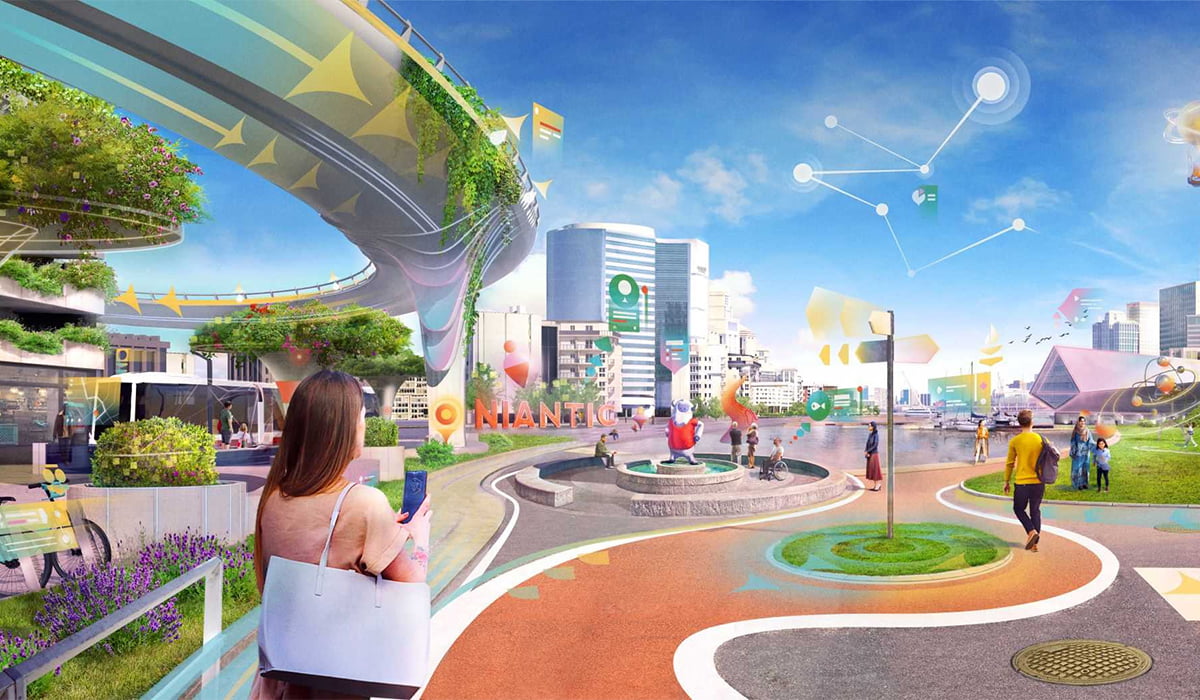Niantic's 3D map for AR Metaverse launches end of May

The "Visual Positioning System" is Niantic's next step towards its long-term vision of an augmented reality cloud. The feature will be released in a development version at the end of May.
Pokémon Go has almost single-handedly stood for smartphone augmented reality games since 2016. However, a weak point from a technical point of view is the sometimes inaccurate GPS data, which does not always precisely locate the real player on the virtual map.
Niantic wants to eliminate this weakness with a "Visual Positioning System" (VPS) for its AR interface Lightship. Thanks to a shared 3D map, VPS is supposed to be so precise and consistent that players can view the same digital objects in the same place from different perspectives at the same time. For example, one Pokémon hunter might be in front of a digital monster and another behind it. Niantic promises an accuracy of a few centimeters.
Niantic's preparation for the AR metaverse
For example, if two monsters are fighting in a meadow, several participants could position themselves around the combatants and observe them from their own perspective. Or they could gather around a spatial AR puzzle in front of a statue and unravel cogs and mechanisms together from all angles.
AR developers will soon be able to implement their own ideas of this kind when Niantic rolls out the VPS update. It will be launched at the end of May 2022 along with the Lightship Summit developer event, which will take place on May 24 and 25 in San Francisco.
Niantic is already touting the concept as a "worldscale" solution that synchronizes many AR-enabled systems. As RoadtoVR reports, the company is initially focusing on selected waypoints in some cities.
Later, it plans to expand spatial map data, including smartphone footage of users. Niantic researchers previously unveiled technology in July 2021 that turns smartphones into capable 3D map scanners.
The project began in 2020 with the ability to scan the environment in Pokémon Go. One day, AR players will be able to create a 3D map of the world practically instantly, which in turn will form the basis for new applications, so the company hopes. Niantic's ultimate goal could be to become an infrastructure provider for other AR apps.
Besides Niantic, other companies also want to recreate our real environment as a digital twin. The goal is the so-called AR Cloud, a 3D coordinate system for the real world. Snapchat operator Snap 2021, for example, has acquired the start-ups for 3D mapping "StreetCred" and "Pixel8Earth". Google, in turn, expanded its AR navigation Live View to indoor environments a year ago. The AI used in Live View can pinpoint location and viewing direction more accurately than GPS, even outdoors.
Cooperative AR games on the green field
A year ago, the trailer for "Codename: Urban Legends," which was created together with partners such as Deutsche Telekom and Verizon, showed how Niantic envisions the joint monster hunt of the future. The video illustrates how an AR game via a 5G connection could benefit from extremely low latency in a shared digital space.
The data collected with the upcoming "Visual Positioning System" could later also become an important basis for AR glasses with video passthrough. Meta with Cambria, Apple and Google with Iris are presumably working on VR headsets with additional video AR function.
Niantic's AR game Peridot does not yet use the new VPS: However, the virtual pets should at least be able to reliably recognize real obstacles and objects and maneuver around them correctly or disappear behind them.
Note: Links to online stores in articles can be so-called affiliate links. If you buy through this link, MIXED receives a commission from the provider. For you the price does not change.